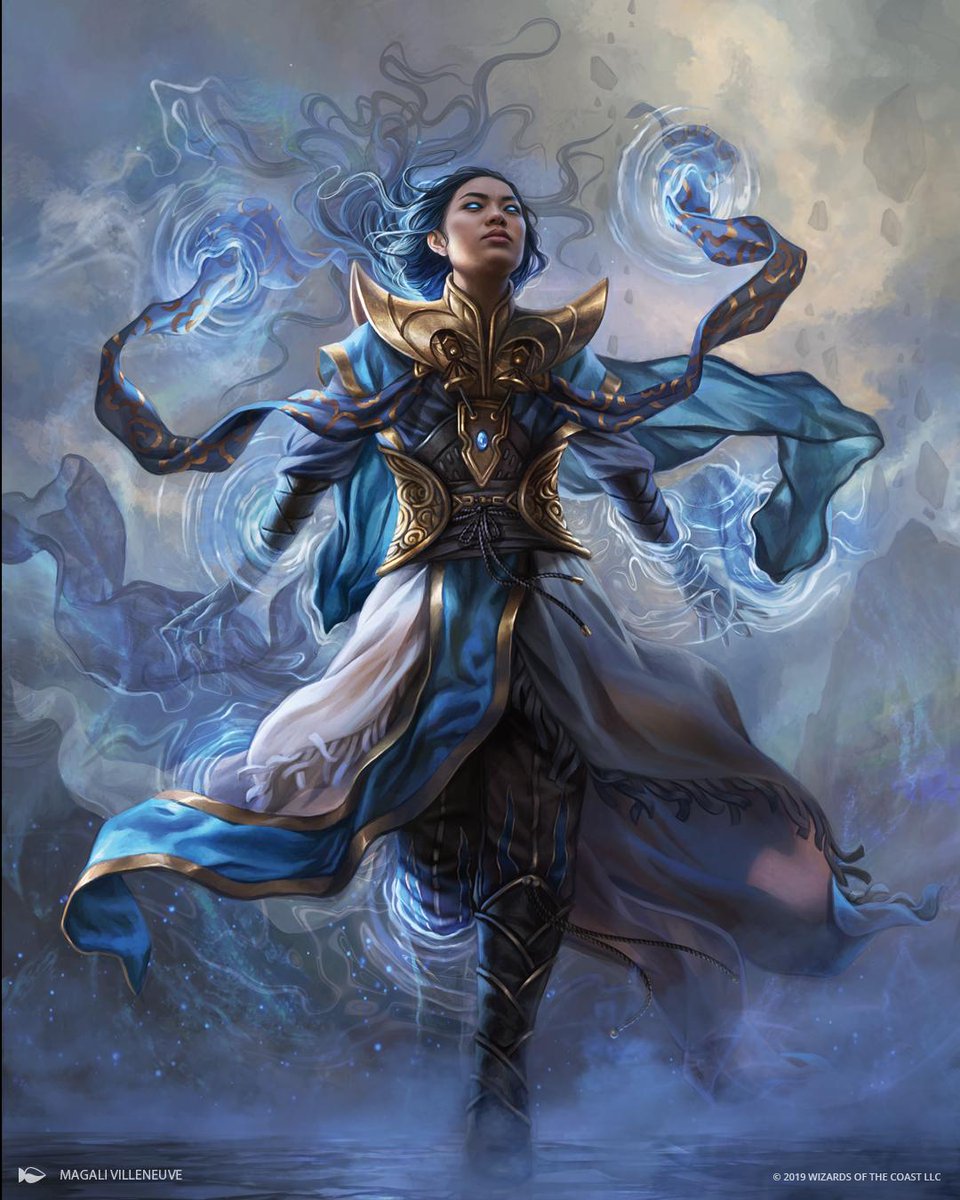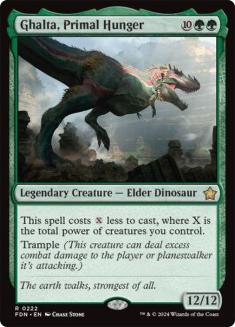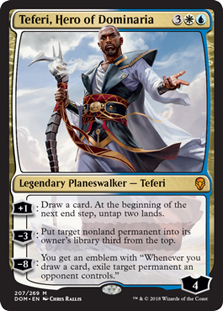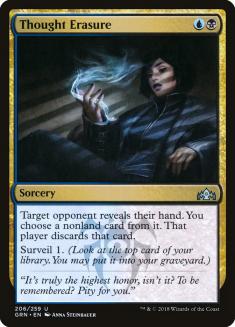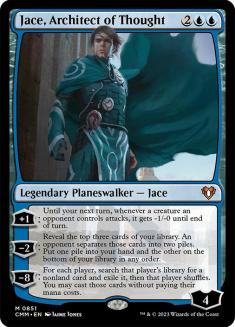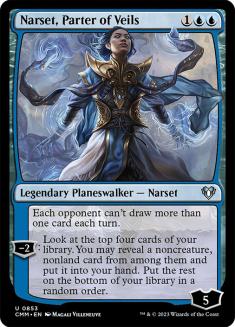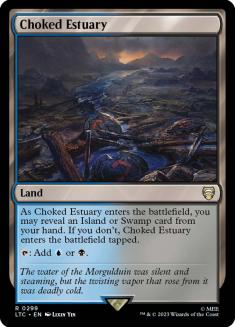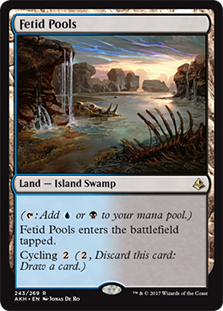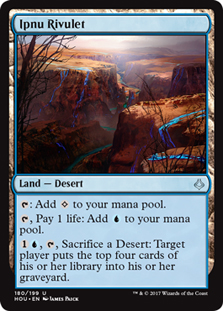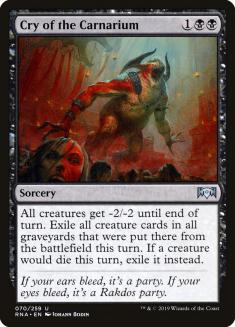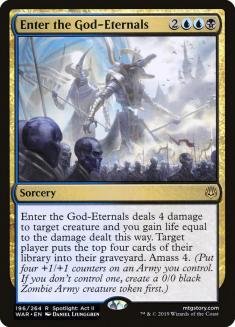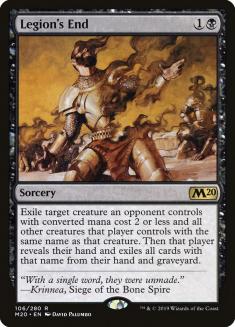After briefly joining the dark side with Dimir Inverter at SCG Indianapolis, it is time to return to my roots. I have had the urge to give the best deck in Pioneer a whirl before doubling down on the best control strategy I can drum up. It is a forgone conclusion that a piece of Dimir Inverter isn’t going to be around much longer, but while it is, we must be prepared to take it on as the clear front-runner of Pioneer.

I wrote extensively last week on what needed to go in Pioneer, before my Team BCW teammate Peter Ingram took the trophy home. The Top 8 in Indianapolis was cluttered with Dimir Inverter, making the banning decision that much easier for those in charge. One tournament doesn’t solidify the fate of a tyrannical deck; however, it is painfully obvious that Dimir Inverter is on a different power level from the other decks of the format. This doesn’t mean it’s unbeatable, but it will take a new angle of attack to take down this format behemoth.
With the known archetypes out there, there isn’t a matchup where Dimir Inverter is a significant underdog. We saw some monstrous take-downs from Shaun Werning playing Golgari Aggro last weekend, where he summoned multiple,giant creatures before these combo players could even gather their thoughts. That is a fine strategy; however, it isn’t as consistent as it needs to be against the deck that deploys a barrage of hand disruption spells in the early-game. To beat a renegade combo deck that has become too powerful, a dedicated control list must be crafted.
There are some decks that can’t interact well Game 1 and that’s where Dimir Inverter shines. Decks like Mono-Red Aggro, Lotus Breach, Golgari Aggro, and Mono-White Aggro are relying solely on their speed. Having access to Gideon of the Trials is simply not enough of a wall to block the impending doom of Inverter of Truth. Mono-Black Aggro and Sultai Delirium have a few more tricks up their sleeve, but Game 1 is tough sledding for most decks out there.
I was eliminated at the close of the tournament by Azorius Control, a fitting end. It feels less bad when my own sword causes my downfall, but it did get me thinking. I tested Azorius Control religiously for weeks in preparation for Players Tour Phoenix and for the upcoming SCG Tour events. The results were mixed, but I found a common weakness against decks with Thoughtseize. With the best deck having powerful hand disruption fueling four copies of Dig Through Time, I knew Azorius Control would not be a consistent contender as currently built. To craft it in a way to handle Dimir Inverter, it would lose to nearly every aggressive deck on the market.
Azorius Control depends on Supreme Verdict and requires the maximum allowed amount to have a fighting chance against quick creatures. This is due to the weakness in its early removal game, as Azorius Charm pales in comparison to Fatal Push. Therefore I tried to make Esper Control work for so long and the mana was the eventual death knell to my favorite strategy. The reason for this dependency on a third color was access to Supreme Verdict, while not giving up Fatal Push in the early-game. It turns out, Fatal Push is so good it may be able to allow us to skip a sweeper altogether.
Creatures (2)
Planeswalkers (7)
Lands (25)
Spells (26)

This deck should look very familiar to you all and for good reason. Dimir Inverter plays out most games effectively as a traditional control deck. There is a powerful combo in the deck, but often the game could have been won by any threat Dimir can produce. Dimir Inverter wins these types of games against any deck with disruption, due to the risky nature of the combo. Hastily exiling your library can be a devastating misplay, as most decks are now equipped with enough answers to provide a fitting punishment.
There are some matchups where not having a sweeper will leave you dead in the water, but not often with the current metagame. Spot removal is king and having Fatal Push, with a few support spells, is good enough. Doom Blade is one of those spells that outperforms Cast Down if Mono-Black Aggro is on the decline. Even if that deck is present, hitting a Mutavault isn’t the worst thing in the world. The other removal spells either hit planeswalkers or can counter a spell. Having access to these flexible answers gives Dimir Control a chance to be a big player against a field that is well-defined.
Control always shines in a metagame that has been figured out. This is even more the case when the best deck in the format can be made into a good matchup, which Dimir Control attempts to do. Using the same powerful disruption as its control sister, Dimir Control yearns to keep the battlefield clean and refill with a timely Dig Through Time. This deck plays out almost identically to Dimir Inverter. The early-game is consumed with hand disruption, cantrips, removal, and counterspells, with the looming Dig Through Time if a follow-up isn’t available. The follow-up in this deck is where we divert completely from the Dimir Inverter strategy and resolve a more powerful planeswalker than Jace, Wielder of Mysteries.
Jace, Architect of Thought and Liliana, the Last Hope both have game-ending applications relatively early. The reason I use the term “relatively early” is because of my control background. Early for me is a nice five or six turns, where my more aggressive friends enjoy an immediate turnaround. Liliana, the Last Hope is still one of the easier planeswalkers to secure an ultimate with and win the game. In this deck, it’s even easier than in previous control iterations.
Thoughtseize, Thought Erasure, Censor, Negate, and removal can often make the coast crystal-clear for an uncontested early-game planeswalker. Narset, Parter of Veils is another great crossover threat from Dimir Inverter, but it doesn’t win the game on its own like Liliana, the Last Hope does. Even though Pioneer is a unique format, the powerful planeswalkers of former Standard sets command respect when resolved. Liliana’s abilities to take apart weak creatures and rebuy Kalitas, Traitor of Ghet and Torrential Gearhulk make it an obvious inclusion in any black-based control deck moving forward.
Liliana, the Last Hope doesn’t seem like it’s amazing against Dimir Inverter, but it does a few important things. It neutralizes Thassa’s Oracle Game 1, where it is often used to pressure enemy planeswalkers. That minor perk is joined by its actual purpose, which is to win the game after an easy ultimate.
Take advantage of the difficulty Dimir Inverter has stopping it from reaching seven loyalty. If these combo players want to run a single maindeck copy of Hero’s Downfall, planeswalkers are our best shot to emerge victorious. Liliana, the Last Hope has more applications in other matchups but does what it needs to do here.
The real pressure comes from Jace, Architect of Thought and Narset, Parter of Veils. Both planeswalkers produce an embarrassment of riches against decks without much battlefield pressure. Narset, Parter of Veils is not a secret anymore, as combo and control decks always make room for it. Jace, Architect of Thought is the planeswalker that doesn’t see a great deal of play because of the general weakness of control in the format, as well as the emergence of Teferi, Hero of Dominaria and Teferi, Time Raveler.
There are only so many spots that planeswalkers can absorb in a control list in these older formats. It is true that both Azorius planeswalkers are superior to Jace, Architect of Thought, but I’ve discussed what happens when we go seeking a third color. Jace, Architect of Thought does what it needs to do in that role, which includes handling creatures, creating card advantage, and ending with a powerful ultimate. Dimir Control typically slips between the first two modes in order to always keep a handful of disruption. After multiple Dig Through Times occur, Jace, Architect of Thought begins its journey to its third and final ability. The planeswalkers in Dimir Control are not on the same power plane as those in Azorius Control; however, the supporting cast of disruption makes it all worth it in the end.
The manabase was a direct import from Dimir Inverter, as it shares the same spell requirements. I really like Ingram’s setup, but I do feel the need to have one Ipnu Rivulet in the deck. The downside to having one of these types of lands, which only hurts when blue is required, is minimal. There is a lot of Dimir Inverter in the competitive arena, prompting us to keep them honest.
The sideboard also looks like many of the Dimir Inverter ones, due to the gameplay I’ve discussed earlier. Dimir Control and Dimir Inverter operate in a similar fashion. These decks do not truly break apart until the win conditions arrive, which are clearly defined in the maindeck already. The sideboard is there to hold dead removal spells against control and combo, while delivering additional Dimir disruption. This gameplan isn’t unique to combo or control in this instance. Other pieces of the sideboard assist weak spots for Dimir Control that mirror those of Dimir Inverter.
Cry of the Carnarium; Legion’s End; Kalitas, Traitor of Ghet; Enter the God-Eternals; and a Cast Down help Dimir Control combat some of its tougher matchups in sideboarded games. As discussed, Dimir Inverter has a much easier time handling aggro decks than does Dimir Control. The trade-off is having a deck that can dominate Dimir Inverter, while not losing too much against the field. With this maindeck and sideboard configuration, this is where Dimir Control lands in comparison.
Better Matchups
- Dimir Inverter
- Azorius Control
- Mono-White Devotion
- Azorius/Bant Spirits
- Golgari Aggro
Equal Matchups
- Sultai Delirium
- Izzet Ensoul
Worse Matchups
- Mono-Red Aggro
- Mono-Black Aggro
- Lotus Breach
Depending on your Pioneer metagame, the trade-off may be worth it for you. Moving to a control deck alleviates much of the risk that comes with playing a card like Inverter of Truth. Dimir Control wins the game in the way Garfield intended – destroy and counter all the opponent’s threats, land a haymaker, and protect it until the opponent dies. This is the way Magic should be played and it is a viable option in Pioneer.
All this changes after the banning of Dig Through Time, which is unavoidable. I hope that pieces of the combo decks are removed instead of the card advantage and selection engine that both decks utilize. Without Dig Through Time, Dimir Inverter may survive, but Dimir Control will not. That will be the time where I dust off my Azorius Charms and get back to work, but until then, let’s give them a taste of their own medicine.

